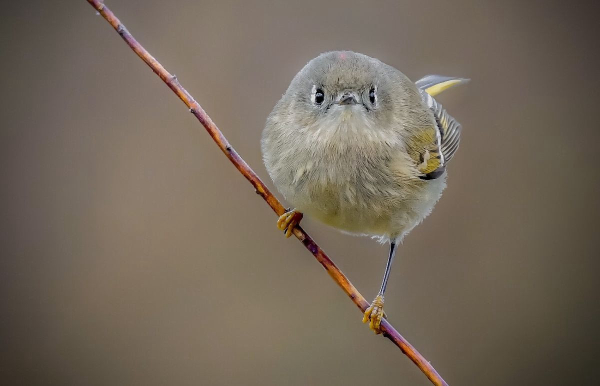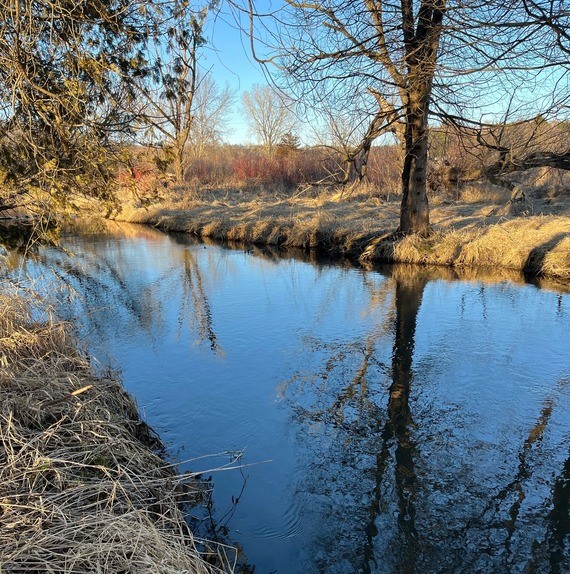One of the contestants, “Rotund ruby-crowned kinglet.” Photo by Andy Raupp
|
Pleasingly plump
Wisconsin Fat Bird Week online contest takes flight April 19th – voters to weigh in on chunky contenders
[WISCONSIN – April 19th, 2024] You’ve heard of Fat Bear Week, what about Fat Bird Week?
Feathers will fly every day from Friday, April 19, to Friday, April 26 as bird lovers vote for their favorite bulbous bird in the first-ever Fat Bird Week online contest, hosted by the Natural Resources Foundation of Wisconsin. Fat is fuel for migratory birds and this is survival of the fattest!
“Fat Bird Week celebrates and spotlights the amazing journey our migratory birds make to get back to Wisconsin,” says Shelly Torkelson, the foundation’s communications director. “A fat bird is a healthy bird. We invite everyone to weigh in on which hefty bird takes home the trophy.”
Fat Bird Week takes a page from, and has the blessing of, organizers of Fat Bear Week, which features bears at Katmai National Park and Preserve in Alaska competing in an online tournament as the bears bulk up for winter hibernation.
While the Alaskan bears gorge on salmon before a long winter’s nap, Wisconsin’s migratory birds eat fat-rich foods to fuel a dangerous, physically taxing flight they take twice a year, says Ryan Brady, a bird expert and conservation biologist with the Wisconsin Department of Natural Resources.
| In preparation for returning to Wisconsin from Central or South America, many birds will pack on 50-100% of their body weight to store up enough energy for their long journey, Brady says. For example, the male ruby-throated hummingbird, which weighs on average 3.0 grams, about as much as a penny, can double its body mass before migration.
“Fat is fuel in the world of bird migration,” he says. “It’s what lets them overcome challenges like storms and loss of stopover habitat and still get to their breeding territories on time and in good condition.”
Fat contains twice as much energy as carbs or protein. It is also a lot lighter and less bulky, perfect for the tiny birds that require lightweight energy for their long-distance travels, Brady says. After bulking up, both the Blackpoll and the Connecticut warblers embark on a two-to three-day non-stop flight over the Atlantic Ocean towards their South American wintering grounds. That’s a distance of 1,000 to 1,700 miles!
Fat stores are hidden underneath birds’ feathers, so birds’ rotund appearance often actually reflects that they’ve fluffed up their feathers to stay warm.
“Fat Bird Week is a great way to look at fun pictures and consider that birds are something more than just pretty to look at,” he says. “And in the end, we all like a winner!”
See the matchups and learn more about how Wisconsin birds prepare for migration in this NRF blog post.
Winner Announcement Webinar
Fat Bird Week’s winning bird will be announced at a webinar on April 30th at noon, where attendees will also learn the top four ways that Wisconsinites can help keep our state’s birds fat and healthy. Presented by SOS Save Our Songbirds and the Natural Resources Foundation of Wisconsin. Register here. |
|
| The Natural Resources Foundation of Wisconsin (NRF) protects our state’s lands, waters, and wildlife by providing funding, leading partnerships, and connecting all people to nature. NRF invests about $1 million each year into conservation and environmental education and leads several diversity, equity, and inclusion efforts for Wisconsin’s conservation community. NRF also helps people explore the outdoors by coordinating 250+ expert-led Field Trips each year to Wisconsin’s most special places and hosts The Great Wisconsin Birdathon, the state’s largest fundraiser for bird conservation. Learn more and get involved at www.wisconservation.org.
|
|

